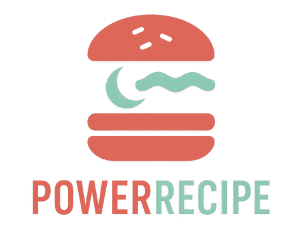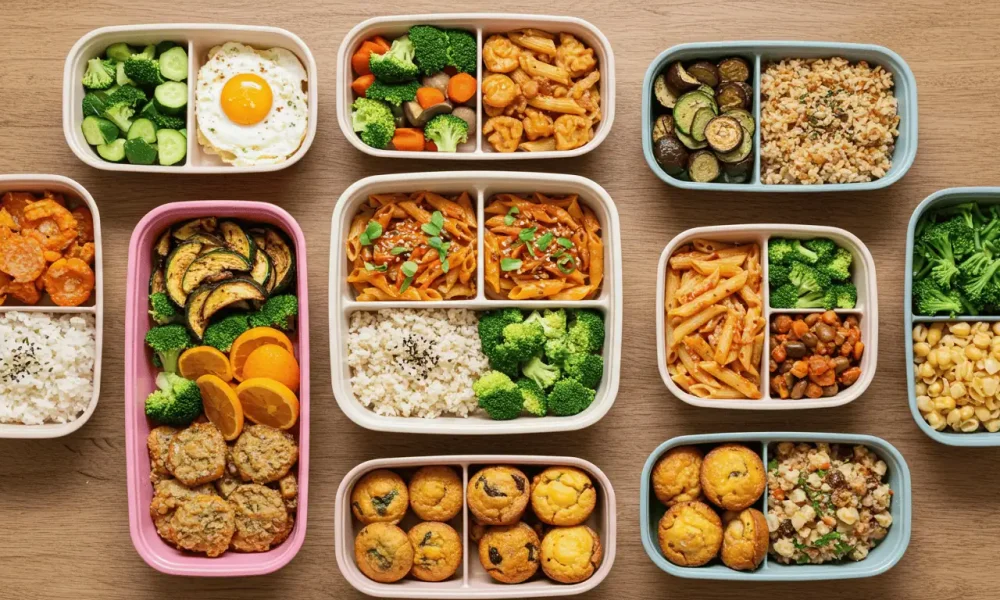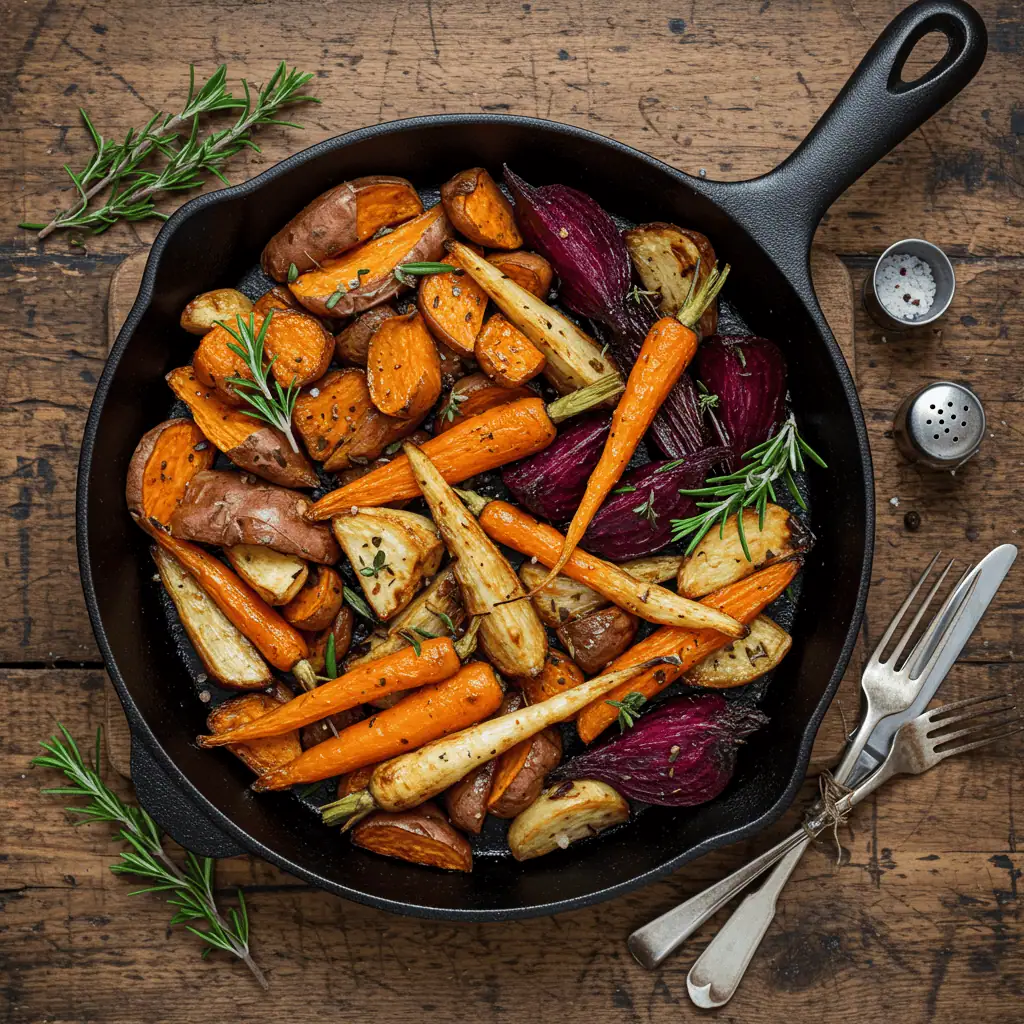Master Your Week with These 11 Budget Meal Prep Ideas That Save Time & Money
Introduction
If you’re trying to cut down on food costs and still eat well throughout the week, meal prep is your best ally. Whether you’re a student, a busy parent, or someone simply looking to make healthier choices, prepping meals ahead helps reduce impulse spending and limits food waste. Even better? You don’t have to sacrifice taste or variety to stick to a budget. In this guide, you’ll discover 11 affordable meal prep ideas that are flavorful, nourishing, and practical. We’ve also included smart tools, shopping tips, and storage hacks to keep your meals fresh all week.
As you explore, check out recommended recipes and resources from PowerRecipe and Fabilous Taste that complement these budget-friendly meals.
Why Meal Prep is the Secret to Saving Time and Money
Meal prepping isn’t just a trend—it’s a time-saving, budget-friendly system that simplifies your entire week. By dedicating a couple of hours to batch cooking, you avoid unnecessary grocery runs, takeout temptations, and midweek cooking fatigue.
For those trying to eat healthier, it also encourages better portion control and more thoughtful ingredient choices.
Benefits Beyond Budgeting
Meal prep promotes:
- Consistency in your diet and routine
- Waste reduction by using up what you buy
- Stress-free mornings and evenings with meals ready to go
Plus, with versatile ideas like these power bowls from PowerRecipe, you can keep your menu exciting without spending more.
How to Start Meal Prepping on a Budget
Starting a meal prep routine doesn’t require expensive gadgets or a fancy kitchen. With a few basic tools and a solid plan, anyone can prepare healthy, budget-conscious meals for the week ahead. The key is simplicity—choosing ingredients that are affordable, easy to prepare, and versatile.
Essential Tools You Need
Before you dive into chopping and cooking, make sure your kitchen is equipped with a few core essentials:
- Meal prep containers (glass or BPA-free plastic with compartments)
- A quality chef’s knife for efficient chopping
- Cutting boards (ideally two—one for produce, one for proteins)
- Measuring cups and spoons to keep portions consistent
- Non-stick baking sheets and a large skillet for batch cooking
For more meal prep-friendly equipment, explore this guide to smart kitchen tools for healthier cooking from Fabilous Taste. These tools are great investments that support faster cooking and better organization.
If you’re focusing on breakfast prep, PowerRecipe has a helpful piece on hash browns and eggs for easy morning ideas—a great example of a low-cost meal using minimal kitchen gear.
Smart Shopping: Stick to the List
One of the most effective ways to stay on budget is to enter the grocery store with a strict shopping list—and stick to it. Avoid browsing, and build your list around meals you’ve already planned.
Here’s how to shop smart:
- Start with pantry staples: rice, oats, lentils, and canned beans are affordable and versatile.
- Buy frozen produce when fresh isn’t in season—try using them in dishes like light pasta with veggies.
- Look for store-brand items which are often cheaper than name brands.
- Shop in bulk for grains and legumes if you meal prep regularly.
For example, lentils and chickpeas are not only inexpensive, but they’re also the base for protein-packed meals like quinoa chickpea rainbow bowls that can be made in batches and stored for several days.
By combining smart tools with strategic shopping, you’ll set yourself up for a successful, stress-free week of nourishing meals.
11 Cheap Meal Prep Ideas for the Week
Meal prepping on a budget doesn’t mean sacrificing flavor or variety. These 11 meal ideas are simple, filling, and made with low-cost ingredients you can find in any grocery store. Best of all, they’re designed to be prepped in batches and stored for grab-and-go meals throughout the week.
1. Rice and Beans Power Bowls – A Weekly Staple for Cheap Meal Prepping

A classic budget-friendly combo, rice and beans are full of fiber and protein. Add roasted veggies, avocado, and a simple dressing for a complete meal.
Discover more vegan power bowl recipes you can rotate throughout the week.
2. Pasta Primavera with Frozen Veggies – Smart and Cheap Meal Prep
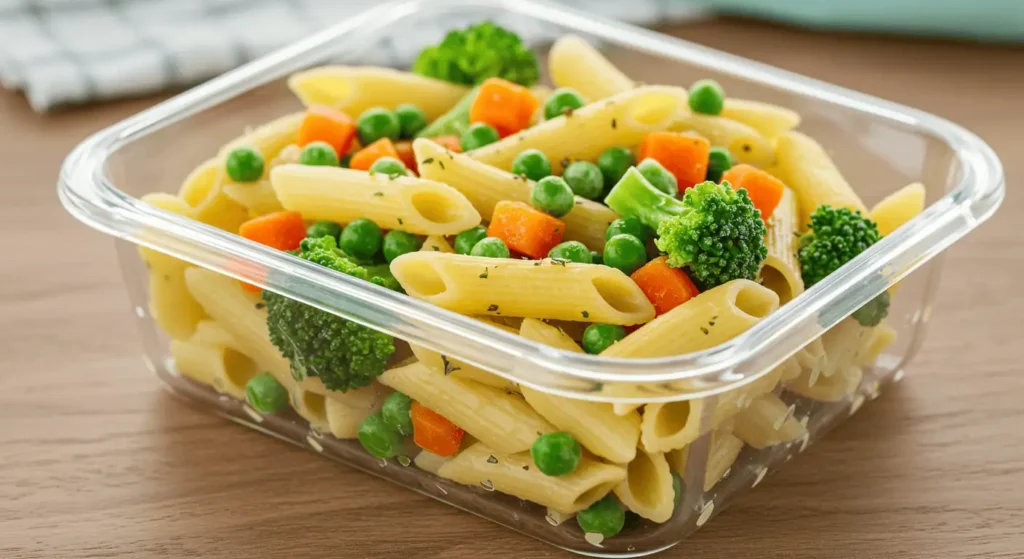
Frozen vegetables are often just as nutritious as fresh, and they’re perfect for quick stir-ins with pasta. Toss with olive oil, garlic, and a sprinkle of cheese.
Looking for more inspiration? Try these light pasta dishes from Fabilous Taste for low-cost variations.
3. Lentil and Sweet Potato Stew – Cozy, Cheap, and Batch-Friendly
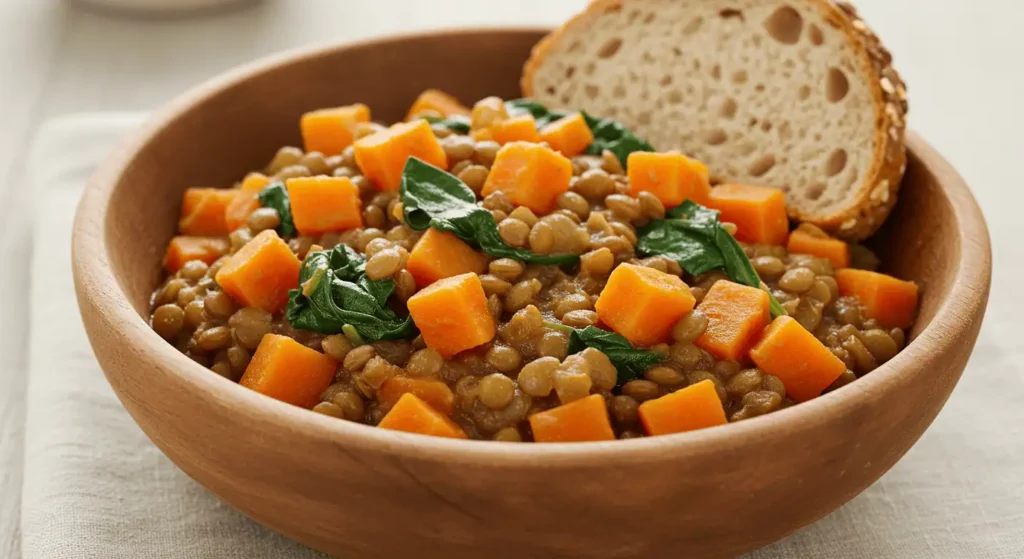
Lentils and sweet potatoes make a hearty, comforting stew packed with nutrients. It’s easy to freeze and reheat.
Pair this with sweet potato cornbread from PowerRecipe for a filling combo.
4. Chicken Stir-Fry with Brown Rice – Versatile and Affordable
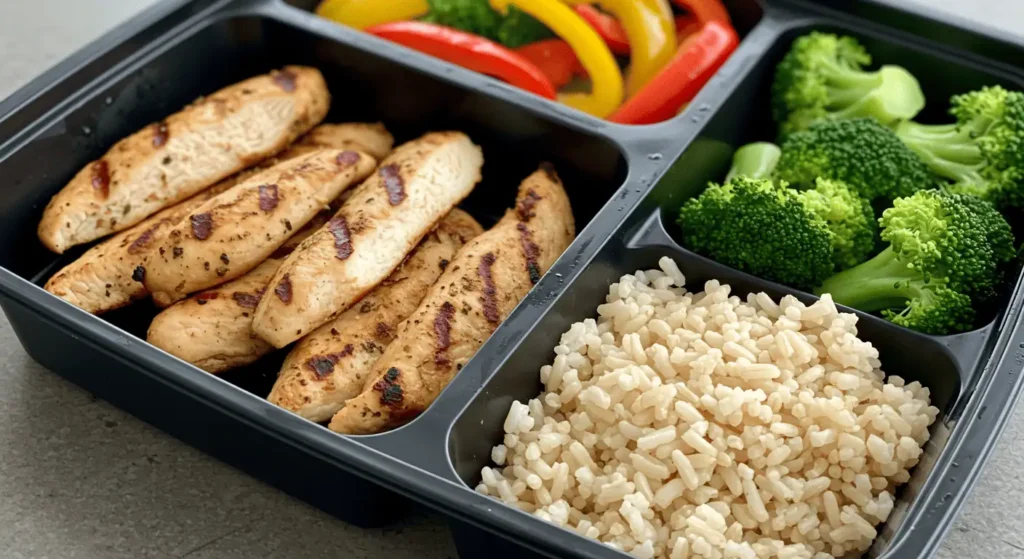
Quick to make and packed with vegetables, this stir-fry is ideal for weeknights. Use boneless chicken and frozen stir-fry veggies.
Try this easy chicken dinner recipe for more stir-fry inspiration.
5. Turkey and Veggie Stuffed Peppers – A Healthy Cheap Meal
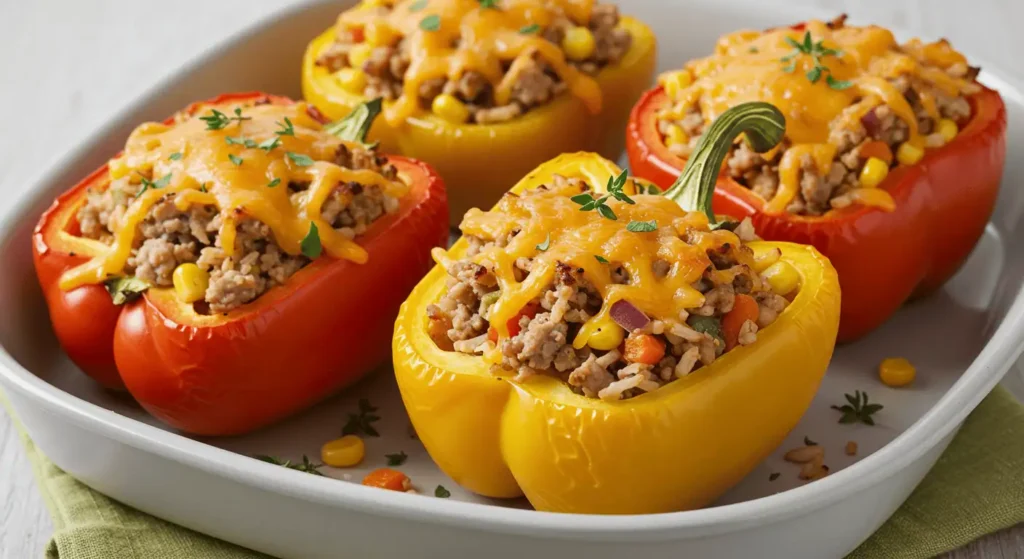
Ground turkey, rice, and chopped vegetables fill bell peppers for a colorful, nutrient-dense meal. Bake in batches and reheat all week.
Craving variety? Explore non-chicken dinner options from Fabilous Taste.
6. Breakfast Burritos – Anytime Fuel for Your Weekly Meal Prep
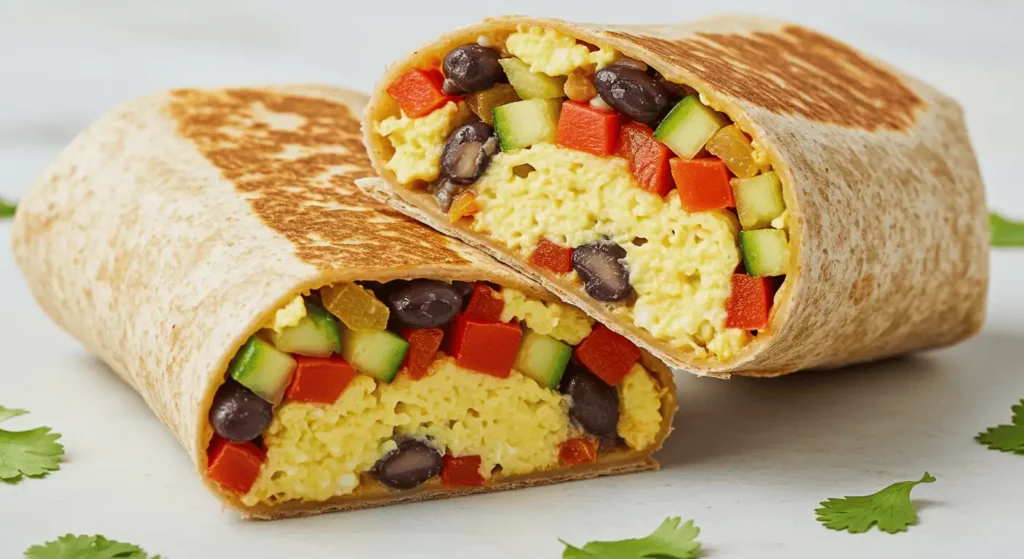
Scrambled eggs, beans, and veggies wrapped in whole wheat tortillas are perfect for breakfast—or dinner.
Make them even better with this breakfast burrito sauce that’s easy to whip up.
7. Chickpea Salad Mason Jars – Fresh & Inexpensive
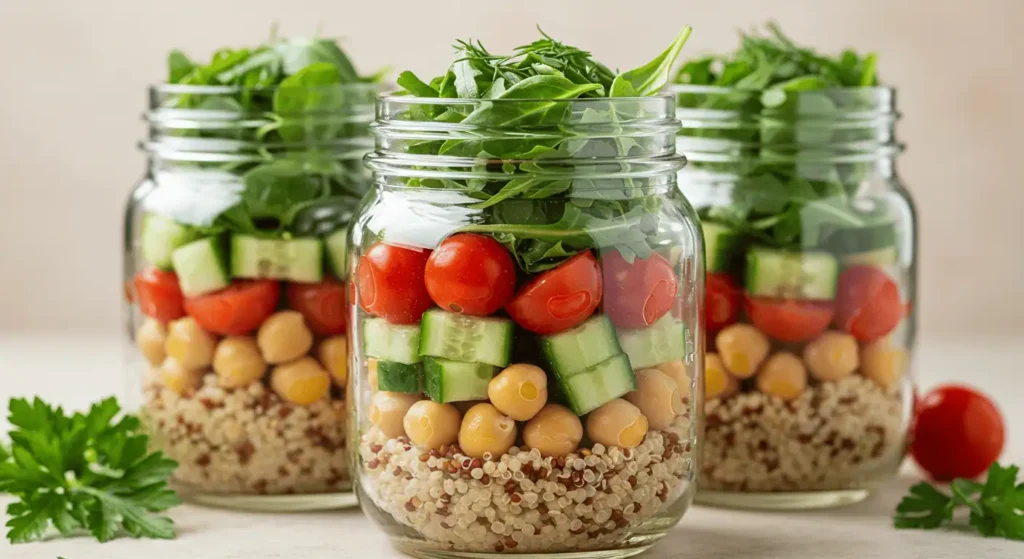
Layer chickpeas, diced cucumbers, cherry tomatoes, and greens in mason jars with your favorite dressing.
Add grains like quinoa for extra protein, similar to this quinoa chickpea rainbow bowl.
8. Tuna Pasta Salad – A Pantry Hero for Cheap Meal Prep

Canned tuna and pasta are pantry staples that combine into a refreshing cold salad with celery and light mayo.
Looking for more low-cal lunch options? Browse low-calorie lunch ideas for variations.
9. Baked Egg Muffins – Simple and Cost-Effective
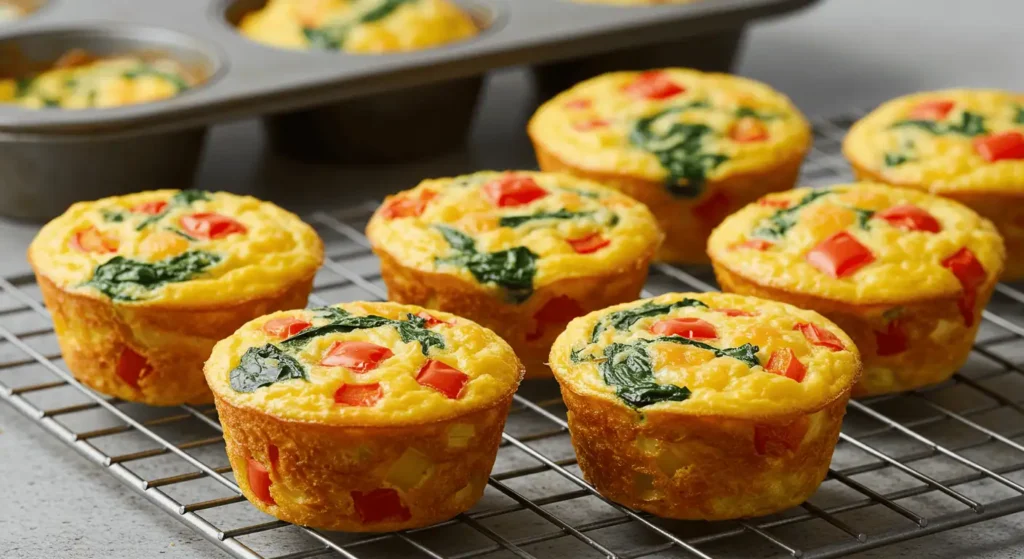
Whisked eggs with chopped veggies and cheese baked in muffin tins make for perfect portion-controlled breakfasts.
Need more breakfast inspiration? See PowerRecipe’s take on hash browns and eggs.
10. Veggie Fried Rice – Use Leftovers Wisely
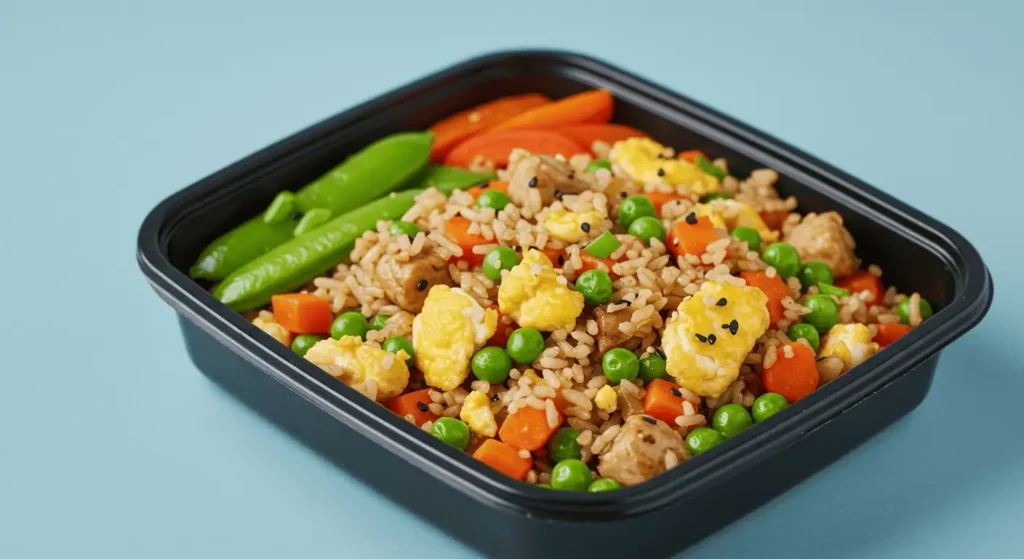
Use leftover rice, frozen peas, carrots, and scrambled eggs to make a quick and satisfying dish.
Add flavor with simple soy sauce and garlic—budget-friendly and quick to prepare.
11. One-Pan Roasted Chicken and Vegetables – Easy & Budget-Friendly
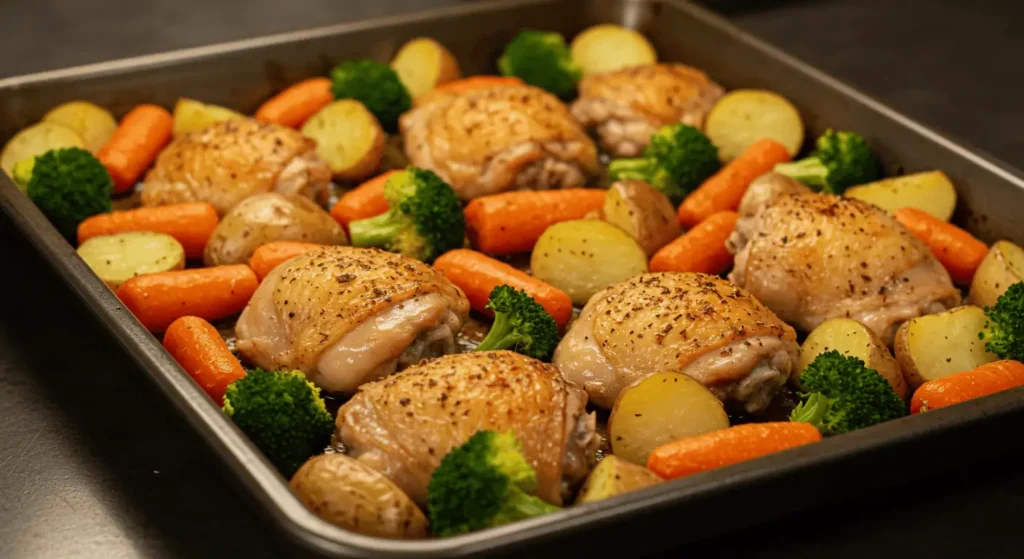
A single sheet pan, chopped vegetables, and chicken thighs make for a low-mess, high-nutrition meal. Roast and portion into containers.
Explore additional chicken meal ideas like this rotisserie chicken guide for storage tips and seasoning tricks.
Weekly Meal Prep Schedule Example for Cheap Eating
Prepping meals in advance saves time throughout the week and ensures you stay on budget. Here’s how to organize your meal prep flow efficiently.
Prepping in Batches for Cheap Meal Prep Success
Dedicate one or two sessions per week—usually Sunday and Wednesday—to batch cook your meals. Cook grains, chop veggies, and prepare proteins together to minimize time in the kitchen.
- Cook grains like rice, quinoa, or pasta in bulk
- Pre-chop vegetables and store in airtight containers
- Batch cook proteins and rotate through different recipes
Sample Weekly Menu Using Cheap Prep Meals
Monday–Wednesday:
- Lunch: Rice & Beans Power Bowls
- Dinner: Lentil & Sweet Potato Stew
Thursday–Friday:
- Lunch: Chickpea Salad Mason Jars
- Dinner: Chicken Stir-Fry with Brown Rice
Snacks/Breakfast All Week:
- Baked Egg Muffins
- Breakfast Burritos
- Tuna Pasta Salad
Tips to Keep Your Cheap Meal Prep for the Week Fresh
Meal prep only works if your food stays fresh, safe, and delicious throughout the week. The key is using smart storage techniques, proper containers, and cooking methods that preserve flavor and texture. Here are essential tips to ensure your meals remain as good on Friday as they were on Monday.
1. Use the Right Containers
Invest in high-quality containers with airtight seals. Glass containers are ideal for reheating and keeping flavors intact. For salads and foods with sauces, look for containers with separate compartments or sauce holders.
For a guide on choosing tools that keep your meals fresh and organized, check out Smart Kitchen Tools for Healthier Cooking.
2. Let Food Cool Before Storing
Packing hot food directly into containers traps steam, which can create sogginess and shorten shelf life. Let food cool for 15–20 minutes before sealing and refrigerating.
3. Store Ingredients Separately
When possible, store cooked grains, proteins, and vegetables in separate containers. This lets you mix and match meals throughout the week while avoiding mushy textures. For example, pair your prepped rice with vegan power bowl toppings one day and stir-fried chicken another.
4. Freeze Wisely
Meals that won’t be eaten within 3–4 days should be frozen in labeled containers. Great candidates for freezing include stews like lentil and sweet potato stew and breakfast burritos.
5. Keep Greens and Crunchy Veggies Dry
Moisture causes greens to wilt and veggies to lose their crunch. Line containers with a paper towel to absorb excess moisture when storing salads like chickpea mason jar salads.
6. Refresh with Garnishes
Before serving, add fresh toppings like herbs, lemon juice, or a drizzle of dressing to revive flavors. This quick step makes leftovers feel like a fresh meal.
Budget Hacks for Smart and Cheap Grocery Shopping
Saving money on groceries doesn’t mean you have to compromise on nutrition or taste. With the right strategy, you can build a meal plan that’s cost-effective and full of variety. Here are tried-and-true hacks to help you shop smarter and get the most out of every dollar.
1. Plan Before You Shop
Start with a meal plan based on what you already have in your pantry and freezer. Then make a detailed shopping list and stick to it. Planning ahead prevents impulse buys and wasted ingredients.
If you need ideas, check out this sample budget-friendly meal plan from PowerRecipe for healthy, low-cost meals.
2. Buy in Bulk (When It Makes Sense)
Staples like rice, beans, oats, and frozen vegetables are cheaper in bulk and can be used across many recipes. Keep a list of your most-used ingredients and stock up when they’re on sale.
3. Shop Seasonal and Frozen Produce
Seasonal produce is more affordable and fresher. When out of season, opt for frozen veggies, which are usually just as nutritious and perfect for dishes like veggie stir-fries or quinoa salads with roasted veggies.
4. Avoid Pre-Chopped and Pre-Made Items
Convenience comes at a cost. Buying whole vegetables, blocks of cheese, and dry grains instead of ready-made versions can save you a significant amount over time.
5. Stick to Store Brands
Store-brand products often have the same ingredients and quality as name brands but at a fraction of the price. Try generic versions of staples like canned beans, pasta, and cooking oils.
6. Use What You Buy
A budget-friendly plan only works if you use everything you purchase. Repurpose leftovers into new meals, like using roasted veggies from dinner in a veggie fried rice the next day.
7. Track Prices and Use Apps
Keep a running list of prices for your most common grocery items. Over time, you’ll notice sales cycles and can time your purchases. Grocery apps and coupons can also help you catch discounts and cashback offers.
8. Build Your Meals Around Affordable Proteins
Eggs, lentils, chickpeas, canned tuna, and ground turkey are all affordable protein sources. Incorporate them into dishes like baked egg muffins, chickpea mason jar salads, and tuna pasta salad.
Storage Containers: Best Tools for Cheap Meal Prep
Having the right storage containers is just as important as the meals you prepare. They keep your food fresh, organized, and easy to grab throughout the week. Whether you’re packing lunches or freezing meals for later, investing in good containers will improve the quality and longevity of your prepped dishes.
1. Choose Airtight and Leak-Proof
Look for containers with tight-fitting lids that prevent spills and keep moisture out. Airtight seals help maintain flavor and texture—especially important for meals like chickpea mason jar salads and rice and beans power bowls.
2. Opt for Glass When Possible
Glass containers are durable, microwave-safe, and don’t absorb odors or stains. They’re perfect for meals you plan to reheat, such as lentil and sweet potato stew or veggie fried rice.
3. Use BPA-Free Plastic for Lightweight Convenience
If portability is your priority, BPA-free plastic containers are a great choice. Look for stackable options with dividers for portioning meals like turkey and veggie stuffed peppers or chicken stir-fry.
4. Mason Jars for Salads and Breakfasts
Mason jars are ideal for layered salads and overnight breakfasts. They keep ingredients like greens, grains, and dressings separated until ready to eat—great for breakfast burritos and overnight oats.
5. Label Everything
Use masking tape or dry-erase labels to note the contents and prep date. This simple habit prevents waste and helps you stick to your meal rotation plan.
6. Consider Freezer-Safe Options
For meals that you don’t plan to eat within a few days, use freezer-safe containers. Dishes like chicken and vegetables and tuna pasta salad freeze well and reheat with minimal flavor loss.
Need help selecting the best tools and containers? Check out this guide to smart kitchen tools for healthier cooking, which includes budget-friendly container recommendations.
Common Mistakes That Ruin Your Cheap Meal Prep
Even with the best intentions, it’s easy to fall into habits that waste time, money, or food. Here are some of the most common mistakes people make when meal prepping on a budget—and how to avoid them.
1. Overcomplicating Recipes
Trying to prep overly complex meals with dozens of ingredients can overwhelm you and inflate your grocery bill. Stick to simple, versatile dishes like rice and beans bowls or quinoa chickpea salads that are easy to scale and repeat.
2. Ignoring What You Already Have
Buying ingredients without checking your pantry can lead to duplicates and food waste. Always build your weekly menu around what you already have at home. Combine pantry staples like canned tuna and pasta to make low-cost meals such as tuna pasta salad.
3. Prepping Too Far in Advance
While it’s tempting to prep for the entire week on Sunday, not all meals hold up well for 5–6 days. Focus on a 3–4 day window and freeze the rest. Meals like breakfast burritos and lentil stew are freezer-friendly.
4. Skipping Proper Storage
Low-quality or improperly sealed containers can ruin even the best-prepped meal. Choose airtight containers or jars to keep food fresh. For guidance, refer to this list of smart kitchen tools for healthy cooking.
5. Not Rotating Meals
Eating the same dish all week can lead to burnout and food boredom. Mix and match ingredients across meals—use the same brown rice in a chicken stir-fry one day and a veggie fried rice the next.
Avoiding these mistakes will help you save money, reduce waste, and keep your meals enjoyable all week long.
FAQ – Cheap Meal Prep for the Week
Q1: How long do prepped meals last in the fridge?
Most cooked meals last 3 to 4 days in the refrigerator. If you’re prepping for the entire week, freeze meals you plan to eat after day 4.
Q2: What’s the best way to start cheap meal prep for the week?
Affordable and nutritious protein sources include eggs, lentils, canned tuna, chickpeas, and ground turkey. For example, try baked egg muffins or stuffed peppers with turkey.
Q3: Can I meal prep on a tight grocery budget?
Yes! Meals like chickpea mason jar salads and pasta primavera can be enjoyed cold. You can also reheat meals in a toaster oven or stovetop.
Q4: Is meal prepping really cheaper than cooking daily?
Absolutely. Buying in bulk, reducing food waste, and avoiding takeout lead to significant savings over time. For more ideas, see this 30-minute low-cholesterol meal plan.
Conclusion
Meal prepping on a budget is more than just a trend—it’s a reliable strategy for saving money, reducing stress, and eating healthier throughout the week. By planning ahead, shopping smart, and using the right tools, you can build a weekly menu filled with variety, flavor, and nutrition—all without breaking the bank.
Whether you’re whipping up a batch of rice and beans power bowls, storing lentil and sweet potato stew in your freezer, or mixing up chickpea mason jar salads for the days ahead, meal prep empowers you to take control of your health and your budget.
Remember, consistency is key. Start small, refine your routine, and build on what works. With time, you’ll find a rhythm that suits your lifestyle—and your wallet.
Additional Resources
To help you go further in your meal prep journey, here are some curated guides and recipes from trusted sources:
- Smart Kitchen Tools for Healthier Cooking – Tips for choosing the best meal prep containers and tools
- Ultimate Rotisserie Chicken Guide – Great for learning how to use rotisserie chicken across multiple meals
- Easy Chicken Recipes with Few Ingredients – Quick and affordable meal options
- Vegetarian Lunch Recipes – Ideas for plant-based meal preps
- High-Protein Overnight Oats Recipe – A perfect breakfast prep for busy mornings
- Low-Calorie Lunch Recipes – Smart lunch ideas that are both satisfying and budget-friendly
- 30-Minute Low-Cholesterol Meals – Fast, heart-healthy meals for weekday planning
With these tools and recipes at your fingertips, you’re fully equipped to prep with purpose—saving time, money, and energy all week long.
